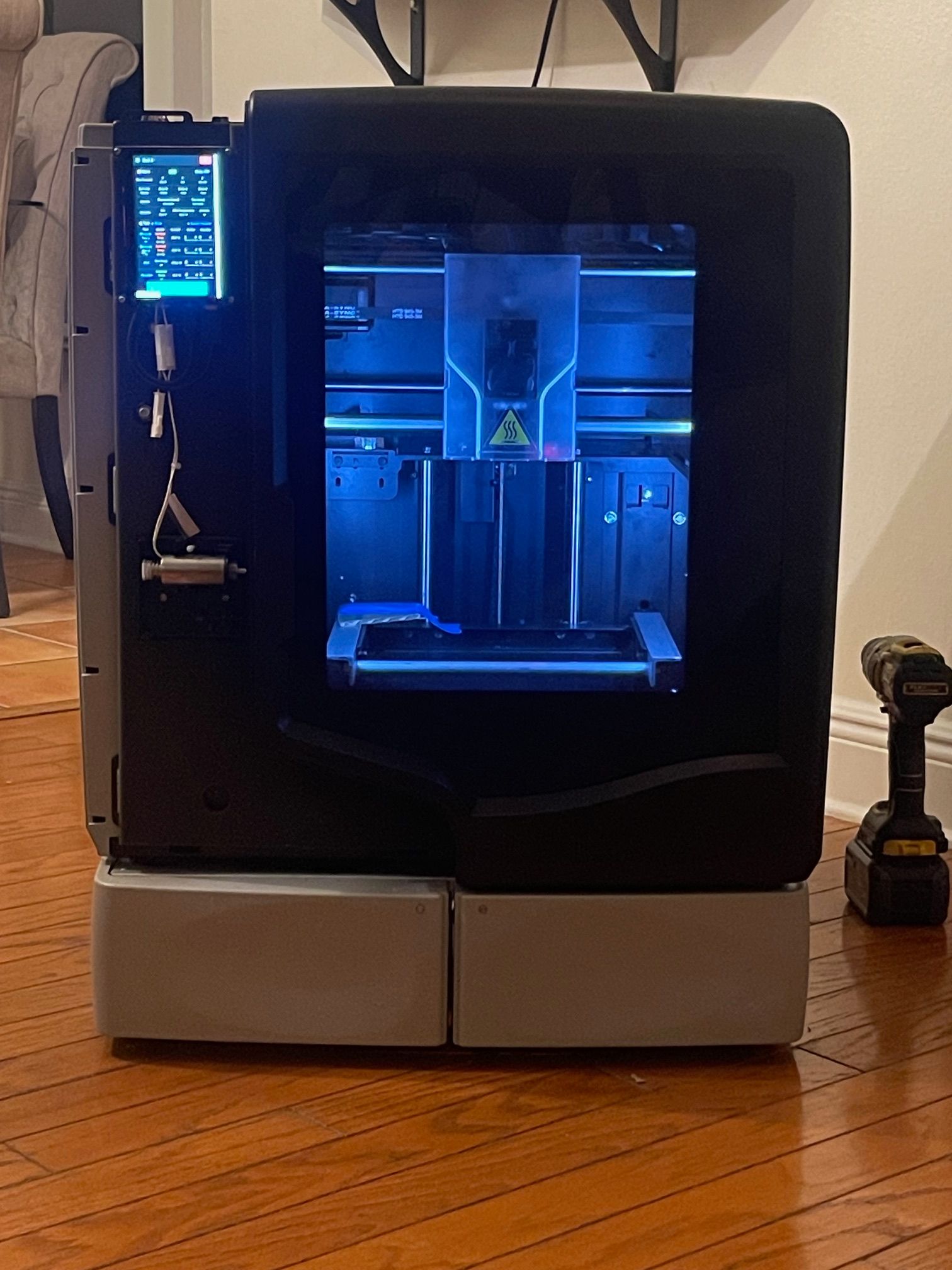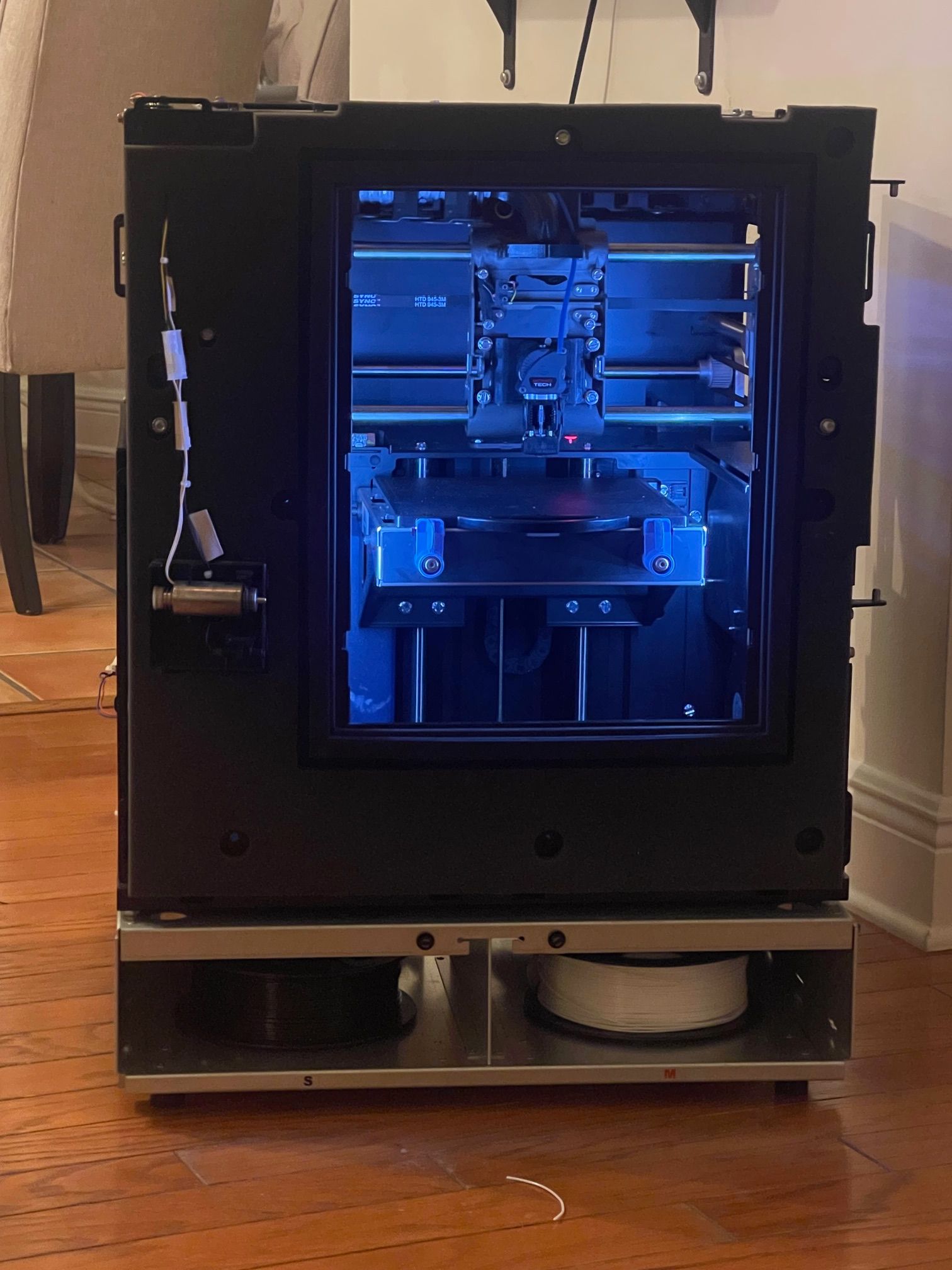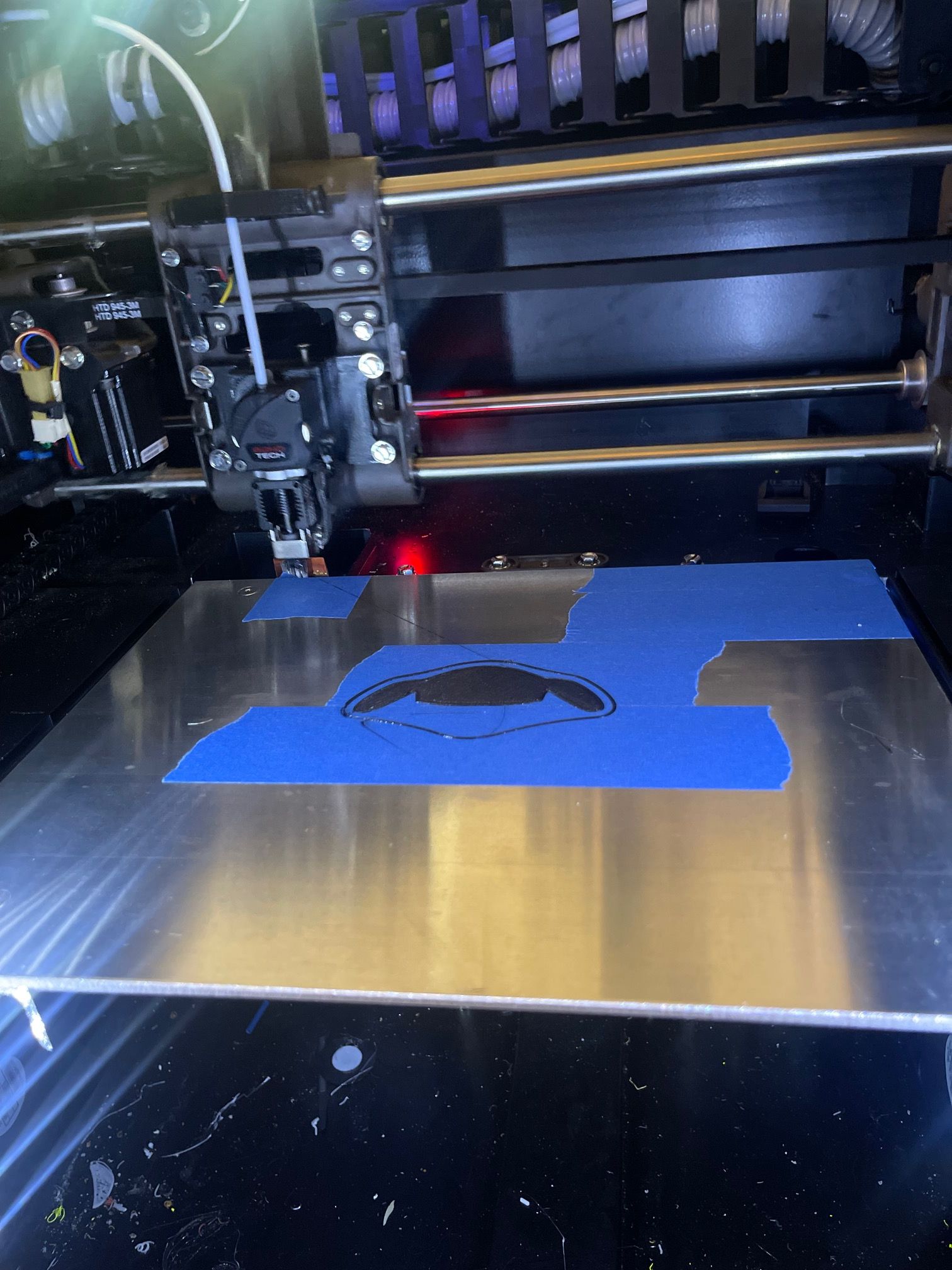-Stratasys uPrint -Duet 3 Mini 5+ -Raspberry Pi 4 -5” HDMI Display
-Duet Tool Board -Duet Magnetic Filament Monitor -BL Touch
-Duet Tool Distribution Board -LGX Lite Bondtech Extruder W/Motor
-Slice 3D Mosquito Hot End -Rhino 480-Watt 24V DC Power Supply
This printer started out as a random Facebook Marketplace find one weekend. $100 later and I now have a 9-year-old machine I fully intended to strip down and use to upgrade the motion system on my other Duet machine, just a retrofitted Wanhao D6 I built years ago. The currents motion system just isn't the best only because of the quality of materials used by the factory, but it works. After some time tinkering with the machine during the disassembly the ideas started to pool, and I began the DIY printer build. And keeping my other machine intact.
After disassembling the electronics cabinet, I was surprised to find that an old Rhino power supply I've been holding onto fit perfectly inside. Neither the heated bed (down the road) nor the chamber heaters use 24V. Both will/are 120v AC. SSR’s are being used to allow the Duet to have all the control over each heater. But the hot end heater is 24v DC. So, this power supply should be more than the machine will ever need.
Getting all the original motors hooked up was simple, but to be sure of wiring a multimeter was used to check wiring. I chose to remove all the factory end stops and go with micro switches for simplicity over anything, and eventually I would have to in the event of a failure. With end stops and motors connected I was able to test the motion system and finalize the steps/mm in all axis. With very minimal tweaking from where I started, I was very pleased with its repeatability with my dial indicator.
After a few test parts I was able to get the hot end mounted in a way to use as much build volume as possible, but still fit under the factory cover. With some ductwork I was able to maintain the original part cooling fan that will be needed when the chamber is heated. The BL Touch is mounted directly behind the hot end (25mm offset) so visibility is kept, and so as much of the bed is able to be probed. The filament monitor was I wanted to ensure the machine has good quality prints and had to be mounted to the print head because of Duet’s need for it to be on the same Tool Board as the extruder.
The print bed was modified but is not in the final configuration. I will be having a bed built and machined to match the Stratasys tolerances. But as a test bed, it is working just fine. Have had minimal issues with bed adhesion with PETG even without a heated bed. I assume the machine's accuracy has something to do with that. All of the final heights of the machine have been based off of the factory trash can and brush combo. My machine retains the function of the brush even though I could gain 10mm+- in Z volume by doing so. Now it has a 280MM x 240MM print surface and 190MM of height, so at least an improvement over the original size and larger than my other machine.
I chose to continue having the heated chamber functional as well, but not something used unless needed and limited to 70 degrees C. I used a SSR to control the heaters and the duet has conditional Gcode to have the blower fans on if the temp is set to anything above 1 degree C. I have to iron out issues with the blower fans as I believe one is failing/failed but will replace both as a precaution before I use them.
I have the material bay setup in a way that allows two filament s to be exchanged into the single hot end but with testing after extruding filament at temp the machine had issues and I've opted to follow Bambu and cut the filament as close to the hot end as possible and purge the filament left into the trach can in the machine. Though that is a long-term desire for the machine and will have to be tinkered with as I go but all of the needed extruders are installed though only one is mapped in the config.g file.
“Tray 1” is the only operating extruder and is pushing the filament to the direct drive extruder. The motor is mapped as a second extruder motor with a 50/50 mixing ratio with the direct drive, and I've compensated the difference by doubling the steps per mm and the info presented int the DWC is correct. I also have the capability to use the second extruder to home the filament to the direct drive very quickly and not having to put the additional wear on the direct drive motor. I am not a huge fan of having additional tools for each material because long term id like 8+ filaments loaded and ready to print any time.
Adding the 5” HDMI display was only because I happen to have the display laying around and I was able to rotate the screen in the Raspberry Pi 4 to alight with the factory display of the uPrint.
Eventually I'd like to build an enclosure and ditch the ABS parts completely but for not a coat of satin black paint worked to change its look completely. I'd also like to take some inspiration from the Bambu machines and add an 8-spool loading system on top of the Stratasys and ditch the material bay all together. Thats why the Tool Distribution board was added so I'd be able to easily add additional control boards to this machine and continue to modify it well into the future and extend its life. There was nothing wrong with the motion system, and in my head to maintain the original machine well into the future may become impossible so ditching all the proprietary aspects of the machine and adapting it to the open-source components where chosen. And only on my fourth print with it and im astounded with its quality and ability to print as well as it does without a part cooling fan or bed heater is amazing, and I'm sure the addition of those will only increase its ability to print fantastic parts.







This was taken the first Z probe to setup the BL Touch to show the machines repetability
